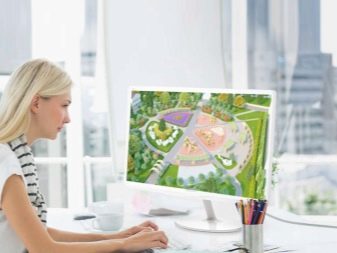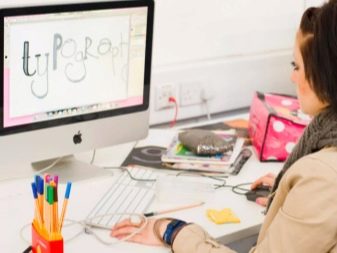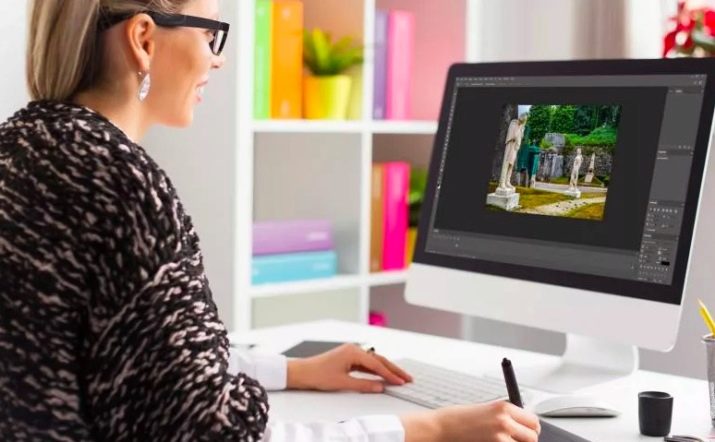All about the profession of freelance designer

A designer working remotely is nowadays a rather widespread and in-demand specialist. Let's consider what are the features of the work of freelancers in design, what they do, how they get education and work, how much they can earn.
Peculiarities
The work of any freelancer, including designers, has the same feature - they work remotely via a computer and the Internet. This implies both the advantages and disadvantages of such an organization of work for freelancers. True, each specialty has its own.

There are several advantages to being a freelance designer.
- Flexibility of the work schedule. The designer himself is considered a creative worker. And creative people either have inspiration, or at the moment it is completely absent. This is why a flexible schedule is perfect for a freelance designer.
- Lack of inspectors (bosses), except for the customer. In other words, the specialist is fully responsible for his work, no one stands above the “soul”, you can, with a clear conscience, introduce any of your ideas and experiments into the project. In general, complete freedom of action and flight of thought.
- Possibility of choosing an interesting order. Comments are unnecessary here - each designer has their own favorite themes and projects.
- Complete independence from other professionals or colleagues. From start to finish, the project is completely in the hands of a freelance designer.
- The work on the order can be partially performed independently of the Internet and computer: on paper with a pencil anywhere and anytime.
And these are just those advantages that the remote designer likes to a greater extent. Here we can add the advantages common to all freelancers: the choice of a more expensive order, work at a convenient time, no need to spend money and time on trips to the place of work (to the office, for example), the absence of office “showdowns” and a bossy “carpet”, no one does not interfere with full concentration and immersion in work.


The main disadvantages regarding a designer working remotely boil down to three points.
- Inconvenience of communicating with the customer. It is very difficult to discuss all the nuances of an ordered project in absentia - even using a phone or video. In addition, not every freelance exchange provides such an opportunity, fearing further conclusion of transactions directly - outside the boundaries of the Internet resource.
- You need to independently acquire quite expensive tools, programs and applications for full-fledged design work. Sometimes you need to raise your skill level. You also need to pay for this out of pocket.
- Especially it can be noted the difficulty of obtaining a profitable order for beginners. For a designer, a prerequisite is the presence of a portfolio, which contains examples of their own developments. Only they can interest customers.
Of the disadvantages common to any freelancer, the most important are: the need to independently search for orders, the risk of being deceived in the calculations, competition on freelance exchanges.

Types of specialties and their responsibilities
Let's consider what types of design specialties are most common among freelancers, and also describe their main responsibilities.
- Web Designer. One of the most popular specializations. A web designer combines 2 skills - being a programmer and an esthete. He must know on what principles the site design is made, have drawing skills and understand graphic design.
- Landscape designer. This specialist should be able to beautifully decorate house plots, parks, and other territories with reference to the surrounding natural landscape: river, lake, plants and buildings.
- Specialists in interior design, furniture, clothing. These designers work according to their profile: they equip their homes, create new furniture or clothes. Most often, such freelancers receive orders from construction firms, furniture production and sewing shops, where there are no in-house designers.
- Graphic Designer. A freelancer in this area needs to have the practice of working with different types of graphics programs and understand colors, especially in their selection. In addition, you need to understand the principles of the impact of advertising mechanisms on a person. The responsibilities of this professional include, for example, the development of logos, business cards, packaging, promotional T-shirts, all kinds of advertising catalogs.
All the named designers are united by two aspects: a sense of beauty and the ability to work with graphic editors.


Education
A vocational education would be the best option for a freelance designer. But even related things will most likely lead to success. For example, art education, coupled with a good knowledge of graphic programs (and artists know them) is already an excuse to do graphic or interior design.
A programmer by education or vocation (self-taught) can easily try his hand at web design. He will only have to improve his knowledge of website design.
Landscape projects are quite capable of being tackled by architecture specialists and construction designers. They should be familiar with working with graphics, and they also know how to draw.


How much do they earn?
For a creative person, good work is more important, pleasing to the eye and heart, but you also need to feed your family. You can get good money on the implementation of design projects even on stock exchanges, but not right away. To raise the rating and gain experience, you first have to take on small developments from one-time customers. Such orders are paid inexpensively. For example, website design costs a maximum of 3 thousand rubles, logo development - from 300 rubles.

Projects for landscape design, interior design and other large orders are paid on average starting from 25 thousand rubles. But the task for them is more difficult to obtain, given the competition.
And in order to prove himself, a freelancer will have to do a good job for his image.









